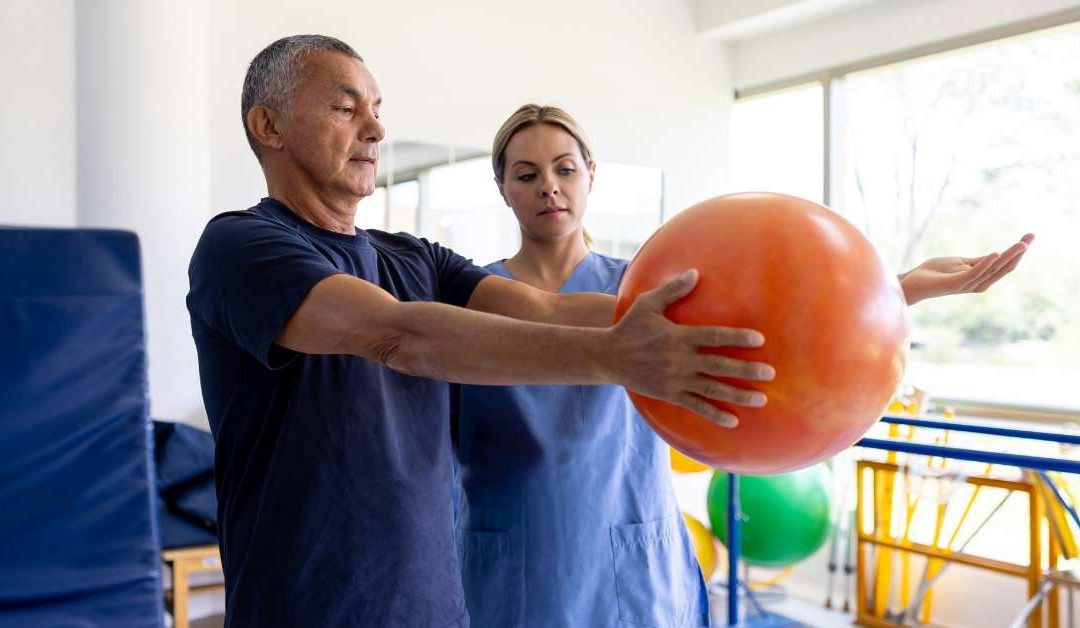Physical therapy for fibromyalgia can feel like a last resort when everything else has failed. But for many people, it’s the first real relief they’ve felt in years.
Fibromyalgia is frustrating. It hurts everywhere, messes with your sleep, fogs your brain, and drains your energy before the day even begins.
Try to explain it, and you’re met with blank stares or advice like “just stretch more.”
You’re not lazy. You’re in pain, exhausted, and tired of feeling ignored. If you’re in Jacksonville and stuck in that cycle, physical therapy might be the shift you need.
KEY POINTS
- Physical therapy helps manage fibromyalgia through gentle movement, pain relief techniques, and personalized pacing strategies.
- An individualized therapy plan can improve mobility, reduce fatigue, and support better sleep without triggering symptom flare-ups.
What Physical Therapy Can Do for Fibromyalgia?
According to the National Library of Medicine, living with fibromyalgia means your symptoms can shift from day to day, sometimes hour to hour. That’s why physical therapists take an individualized approach.
Instead of forcing your body through pain, they build a plan that respects your limits and works with your nervous system, not against it.
These are the ways physical therapy can make a real difference with fibromyalgia.
- Reduce Widespread Pain. Targeted movement and manual therapy can calm overactive nerves and relieve muscle tension. Techniques like soft tissue work, stretching, and gentle exercise help interrupt the pain cycle without triggering flare-ups.
- Improve Flexibility and Range of Motion. Stiffness is common with fibromyalgia, especially in the morning. A physical therapist can guide slow, controlled stretches that make it easier to move without strain. Over time, this helps joints feel less restricted.
- Boost Energy Through Light Aerobic Activity. Fatigue is one of the toughest parts of fibromyalgia. Low-impact aerobic exercises, such as walking, swimming, or using a recumbent bike, can improve stamina without overwhelming your system. These are introduced gradually, based on your tolerance.
- Build Strength Without Overexertion. Many people with fibromyalgia avoid movement out of fear it’ll make symptoms worse. But light resistance exercises, tailored to your ability, can rebuild muscle support and reduce strain on painful areas.
- Support Better Sleep. Physical activity during the day, especially paired with relaxation techniques, can improve sleep quality. Therapists often incorporate breathing exercises, posture training, and gentle movement to reduce nighttime discomfort.
- Teach Pacing and Flare Management. A major part of treatment is education. Your therapist will help you learn how to pace daily activities, recognize your limits, and avoid the “push-crash” cycle that leads to flare-ups.
What to Expect During Physical Therapy for Fibromyalgia?
Starting physical therapy for fibromyalgia can feel like a big step, especially when your symptoms change day to day. Here’s what the process usually looks like from your first visit to ongoing care.
Step 1: Full Evaluation
Your first appointment is all about getting the full picture. The therapist will ask about your pain, fatigue, sleep quality, mobility, and which activities are hardest. They may guide you through gentle movements to assess flexibility, strength, posture, and balance.
Step 2: Setting Goals That Fit Your Life
Together, you’ll set specific goals based on what matters most to you. That might mean walking farther without fatigue, feeling less stiff in the morning, or managing pain during work or errands.
Step 3: Starting with Gentle Movement
Early sessions focus on safe, low-impact movement. Your therapist may guide you through light stretching, breathing exercises, short walks, or simple strength work using resistance bands or your body weight.
Step 4: Hands-On Pain Relief if Needed
If your muscles are tight or sore, manual therapy may be added. This could include soft tissue release or gentle massage to improve circulation and ease discomfort.
Step 5: Learning How to Pace Yourself
You’ll learn how to manage energy across the day without overdoing it. Many people with fibromyalgia fall into the “push and crash” cycle. Your therapist will teach you how to stay active without triggering a flare.
Step 6: Adjusting the Plan Over Time
Your therapist will keep checking in to see how your body is responding. If your symptoms shift or a flare comes on, your treatment plan can be scaled back or modified to meet you where you are.
Step 7: Building Consistency and Confidence
The long-term goal is to help you feel more in control of your symptoms. With the right plan, many people start to move more freely, sleep more soundly, and have fewer flare-ups over time.
Find Relief That Fits Your Life
Fibromyalgia can be unpredictable, but that doesn’t mean progress is out of reach. With the right support, many people find ways to move more freely, manage pain more effectively, and feel better in their daily routines.
Physical therapy won’t eliminate every symptom, but it can offer steady, realistic steps toward feeling stronger and more in control.
You don’t have to push through pain or figure it all out alone. A customized therapy plan designed for your body, your limits, and your goals can make a real difference over time. Even small improvements in movement, sleep, or energy can help shift the day in your favor.
At Motion Rx in Jacksonville, you’ll get one-on-one care from physical therapists who know how to work with fibromyalgia.
If pain, stiffness, or flare-ups have been holding you back, we will help you find a way forward with a plan that fits your body and your goals.
Book your consultation today and take the first step toward more movement, less pain, and better days.
FAQs
Is physical therapy safe during a flare-up?
Yes, but it’s important to scale back. During flares, therapy may shift to gentle stretching, breathing, or relaxation techniques. The goal is to keep you moving without adding stress to your system.
What should I wear to my first physical therapy session?
Wear comfortable, stretchy clothing that allows easy movement. Athletic shoes are a good idea, especially if you’ll be doing light walking or balance exercises.
Can I continue physical therapy at home?
Yes. Your physical therapist can give you simple, customized home exercises to stay consistent between visits. These are often key to making long-term progress.



